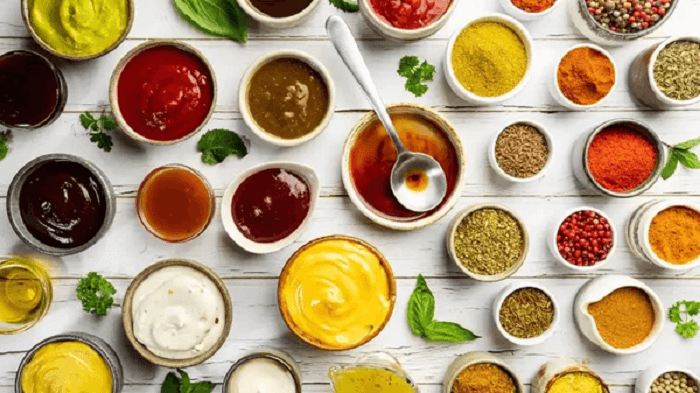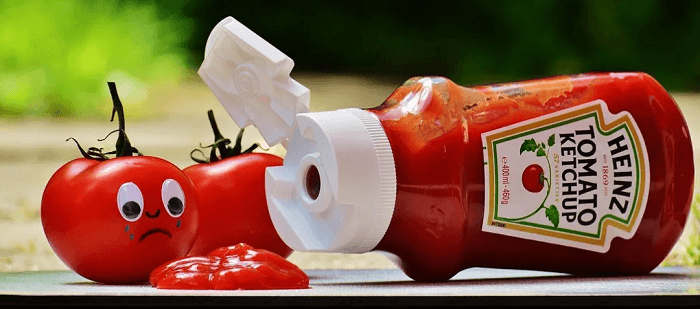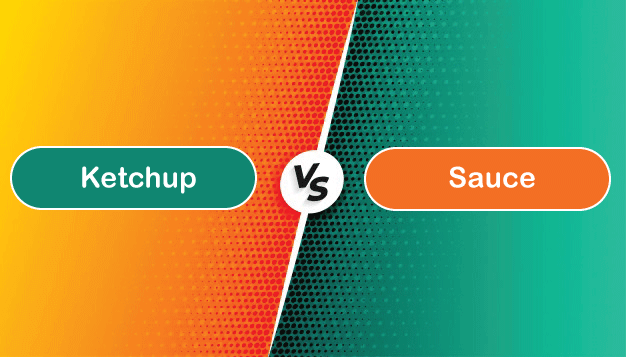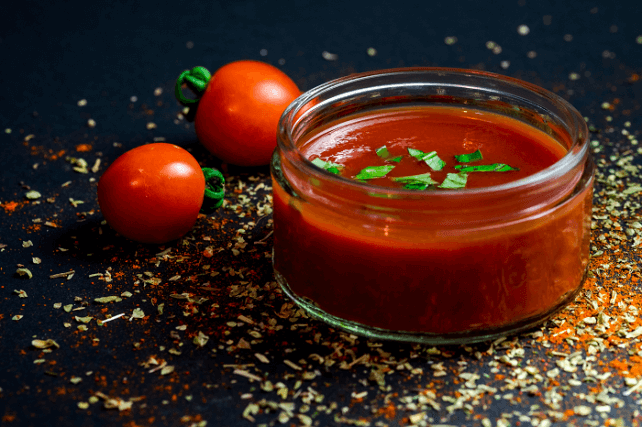Difference between sauce and ketchupNow let's understand the main difference between sauce and ketchup in detail. Most people generally consider sauce and ketchup the same, but it's not. When it comes to hunger and eating something, we add some extra flavour to add taste to our food in the form of sauce and ketchup. They are the children's first choice as they found it yummy and flavourful even though some children couldn't eat their meal without ketchup and sauce. Today the trend of fast food loved by everyone is complete with sauce and ketchup. What is sauce?The sauce is a flavoured and seasoned thick liquid added to food to enhance its flavour, and it can be sour, sweet, spicy or savoury. The sauce is considered a dressing agent or toping to food, an agent that adds zest or piquancy to food. Sometimes sauce adds various features to food and becomes part of the main dish or accompanies the food being prepared. The word sauce is derived from the Latin word salsas, which means "salted". According to food historians, the sauce was initially developed for various purposes in cooking also. Firstly it was used as a meat tenderizer to increase its taste. The sauce is a semi-liquid or liquid condiment that enhances the moisture, flavour and aesthetic or visual appeal of food. All over the world, sauce is considered an important food item that can be eaten with savoury dishes and desserts. Types of sauces
In broadening, way sauces are defined in ten distinguished ways such as:
What is ketchup?
Ketchup, pronounced as ketchup and spelt as catchup or catsup, is widely used worldwide. It is a cold, thick, red sauce made from ripened tomatoes, vinegar, and salt-sugar, cinnamon, onion, garlic, various flavours etc. The word ketchup is derived from Chinese ke-tsiap (a pickled fish sauce) or the Malaysian word ketchup and made its way to various countries like Indonesia, the UK, Australia etc. "Ketchup is a kind of sauce made specifically with tomatoes with added flavours." Process of making ketchupThere are various brands of ketchup in the market with different formulas (may vary in the amounts of spices or flavouring). The ketchup formula can be adjusted according to the growing condition and type of tomatoes because the acid and sugar content of tomatoes also changes. Making ketchup follows a process such: a) Developing quality is the first step in making ketchup, where developers seek the best quality tomatoes for their products. Tomato variety should be superior in colour, flavour texture and yield, and this consistency should be maintained to attain the same flavour and colour of the finished product. b) Preparation of tomatoes Best seasonal tomatoes are harvested for ketchup then they are sorted, washed and chopped-they are then precooked or scaled and preserved in stainless steel vats and destroy bacteria. c) Pulping The preserved tomatoes are placed into the cyclones that mash them up and further separate tomato skins, the seeds and the pulp and that pulp is filtered through a juicer. The filtered pulp makes ketchup and can be stored in the paste later. d) Add ingredients and cooking. The pulp is pumped and heated to boiling in large cooking tanks or kettles. If the fresh pulp is used in cooking tanks, then foaming occurs, but if not, anti-foaming compounds or compressed air are used. In this state, spices with onion and garlic (optional), sweeteners, vinegar, salt, and vinegar are mixed. The mixture is cooked for 35-45 minutes, and added salt and sugar. The cooking mixture is circulated by rotating blades installed in the cooking tanks. Temperature plays an important role in creating a good textured and flavour full mixture. e) Finishing Cooked ketchup mixture goes through a finishing machine that removes access fibre and particles through screens and results in a smooth consistency ketchup. Smoother consistency is mandatory for further preparation; that is why it can be achieved by milling ketchup at higher temperatures and pressures. f) Removing air Growth of bacteria and ketchup discolouration can happen due to access air; therefore, air should be de-aerated. g) Filling The prepared is poured into the filling tanks or machines to prevent contamination at a temperature of less than 190o F. ketchup containers of different sizes and shapes are filled with ketchup and immediately sealed to retain the freshness of the product. h) Cooling the paste The prepared paste is cooled down properly using cold air and water to prevent flavour loss through stack burning. i)Labelling and packing At last, the prepared paste is packed in labelled ketchup containers containing product information like date, location/ address of manufacture, ingredients and shelf life. Before shipping, all the full bottles of ketchup are inspected. j) Finally, the ketchup is dispatched for sale and reaches its consumers. Note: The first major producer of ketchup was the Heinz Company, which created a savoury flavour of ripe tomatoes with a hint of sourness and sweetness in ketchup. Soon it becomes familiar to many consumers as it pairs well with a wide range of foods.A key difference between sauce and ketchup
Finally, we can conclude that ketchup is a sauce, but all sauces can't be considered ketchup. Both have their flavour and tastes.
Next TopicDifference between
|
 For Videos Join Our Youtube Channel: Join Now
For Videos Join Our Youtube Channel: Join Now
Feedback
- Send your Feedback to [email protected]
Help Others, Please Share










